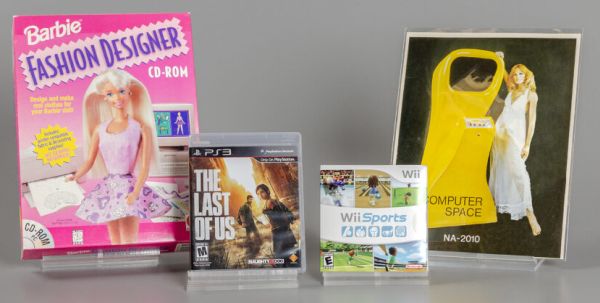
I don’t know if you’ve noticed or not, but Naughty Dog’s The Last of Us has had a pretty good year. An enhanced remake known as The Last of Us Part I helped set new standards for accessibility in games when it debuted on the PS5 in September. HBO’s hugely popular live action adaptation followed in January to rave reviews and some of the highest ratings in the network’s history. And now, it has been inducted into the Strong Museum’s World Video Game Hall of Fame as part of the Class of 2023.
Three other games were inducted this year, and each one sparked a revolution in video games in their own way.
Nintendo’s Wii Sports launched alongside the Wii in 2006 and popularized motion controls in a big way. Not only did Nintendo’s traditional audience love it, but the game also became a favorite of seniors and inspired Sony and Microsoft to introduce motion peripherals later that generation.
Like Wii Sports, Mattel Media’s Barbie Fashion Designer also opened up video games to a new audience in 1996. The dress-up game sold more than half a million copies in its first year (more than megasellers like Doom or Quake over a similar span of time), kickstarted a conversation about gender and gaming, and served as an introduction to technology for many women.
Finally, Nolan Bushnell and Ted Dabny’s Computer Space, the first commercially-available video game, has made its way into the World Video Game Hall of Fame
The historians and curators from the World Video Game Hall of Fame spared a few thoughts about the Class of 2023, which you can find after the break.
“Despite debuting in 2013, The Last of Us remains popular because of its quality of gameplay and strength of story,” Video Game Curator Lindsey Kurano said. “The 2023 HBO adaptation has expanded the game’s reach and popularity. Created with Naughty Dog’s involvement, the show has garnered support from both critics and fans as one of the best video game adaptations ever made.”
“With more than 82 million copies sold, Wii Sports is one of the best-selling video games of all time, but its true influence comes from the fact that it made gamers out of millions of people around the world who’d never thought about playing one before,” argued Aryol Prater, a Research Specialist for Black Play and Culture. “It became a gaming phenomenon as news stories proliferated about the game getting diverse groups of people—including those at many senior centers—off their couches and breaking a sweat with virtual bowling, tennis, and more.”
Collections Manager Kristy Hisert summed up the strong influence that Barbie Fashion Designer has had over the last two decades: “Barbie Fashion Designer became a jumping-off point for the girls’ games movement and shook up the software and gaming scene. It also sparked important questions and debate. What does it mean to be a game for girls? Should there even be games ‘for girls’? What are the implications of these games? What are the consequences of gendering games?”
And Jeremy Saucier, Assistant Vice President for Interpretation and Electronic Games discussed the importance of Computer Space: “There was no video game industry in 1970. The games that we’d now call video games were still mostly locked away on computers in university and research labs, inaccessible to the public. Computer Space changed all that in 1971. Ultimately, Computer Space didn’t bring video games to the masses, but by showing that video games could reach paying audiences outside of computer labs, it laid the foundations for the game industry.”
Congratulations to all of this year’s inductees and good luck to the rest of this year’s finalists (Age of Empires, Angry Birds, Call of Duty 4: Modern Warfare, FIFA International Soccer, GoldenEye 007, NBA 2K, Quake, and Wizardry). Maybe one or more of them will get their shot with the Class of 2024.

